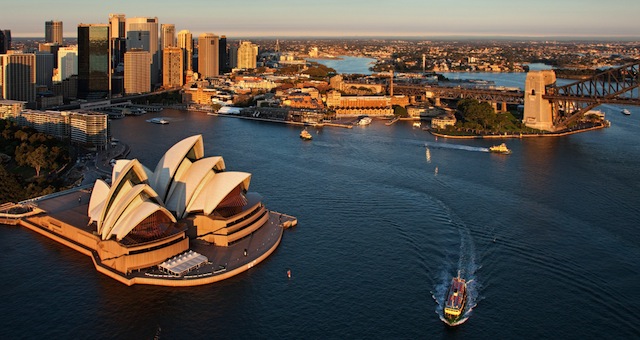A new wave of capital from Asia is making a beeline for Australia’s trophy hotel assets, driving domestic buyers out of the high-end market as competition strengthens, according to CBRE.
CBRE’s 2015 Australian Hotel Market Update shows robust appetite for hotel property across the country is underpinning strong transaction activity, with a flurry of recent sales setting record yields and price points.
CBRE Hotels Senior Director, Wayne Bunz, said an injection of southbound capital into the market in 2014 was responsible for the sale of several renowned hotel assets including the Park Hyatt Melbourne to Fu Wah International, Lonsdale Melbourne and Hotel 1888 Sydney to the Hong Kong-based Ovolo Group.
This month, Rydges Darwin Airport Resort and Hotel was purchased by a Singaporean-based private equity group after an extensive six-week international marketing campaign, led by the CBRE Hotels’ Australian and Singapore teams. The asset sold for $84 million.
“There is unprecedented foreign interest in the hotel market at present,” Bunz said.
“Singapore groups are leading the charge, having invested twice as much in Australian hotel properties than the next most active capital source, Hong Kong, followed by Malaysia and China respectively.”
Bunz said Asian buyers accounted for almost all hotel sales over $50 million in 2014, with unabated demand from these groups prompting local buyers – primarily high net worth individuals – to target assets sub $40 million.
“Australia’s relative economic stability and security make it a sought after market, particularly with Asian investors who are looking to acquire a presence in populous gateway cities with attractive growth prospects,” Bunz said.
According to the report, the significant level of interest in Australia’s hotel market is reflected in the forecast yields for several recent transactions falling below 6.5%, including Melbourne Park Hyatt (6.2%) and Sheraton on the Park, Sydney (6.3%).
“We expect that the yield profile for well located, major hotel assets within the major Australian corporate markets will continue to tighten, reflecting the investment surge from international investors seeking to take advantage of Australia’s economic stability and favourable growth prospects,” Bunz said.
While investors continue to set their sights on Australia’s most populous markets, Sydney and Melbourne, Cairns and the Gold Coast emerged as the investment hotspots in 2014.
Revenue per available room (RevPAR) lifted 10.3% in Cairns, with the Gold Coast trailing closely with 9.6%. Nationally RevPAR lifted 4.1%.
“A lift in hotel trading profit due to low cost increases, together with a tightening of investment yields prove hotels are an attractive asset class for investors and operators alike,” Bunz said.
In addition to outpacing the country with RevPAR growth, Cairns also experienced a significant improvement in occupancy levels due to a strong rebound in international and domestic tourism.
Bunz said the imbalance of supply versus demand in Cairns would see the hotel market respond favourably to these conditions.
Hotel transactions across Australia reaching a peak of more than $2 billion in 2014 and the market is expected to continue its upward momentum, with sales expected to be upwards of $1.5 billion in 2015.
CBRE Hotels Senior Director of Strategic Solutions, Oscar Westerlund, said several new hotel operators and brands were looking to enter the market, further diversifying the increasingly competitive hotel landscape in Australia.
Dalian Wanda is expected to introduce its Wanda Vista brand with its new luxury 5-star hotel development at the recently acquired Goldfields House.
The Intercontinental Group is planning to introduce its Hotel Indigo boutique range and Holiday Inn Express, geared to business travelers.
Other groups looking to make a foray into the Australian market including Banyan Tree, which will be launching its Cassia brand at new developments in Brisbane and the Gold Coast. Meanwhile, Hyatt is also seeking to roll out its Hyatt Place brand across the country.
The hotel market is also undergoing a shift in fundamentals, with new developments steering away from traditional full service models, creating more room-focused hotels with food and beverage elements that are separately leased to specialist tenants.
“There has been a shift away from the full service model. We are increasingly seeing hotel developments in the 3-4-star, limited service bracket,” Westerlund explained.
“There has been a lot of interest in modular designs, which significantly reduces the cost and time taken for construction by manufacturing and assembling portions of the hotel in China, before transporting them to the final site for assembly,” he said.


